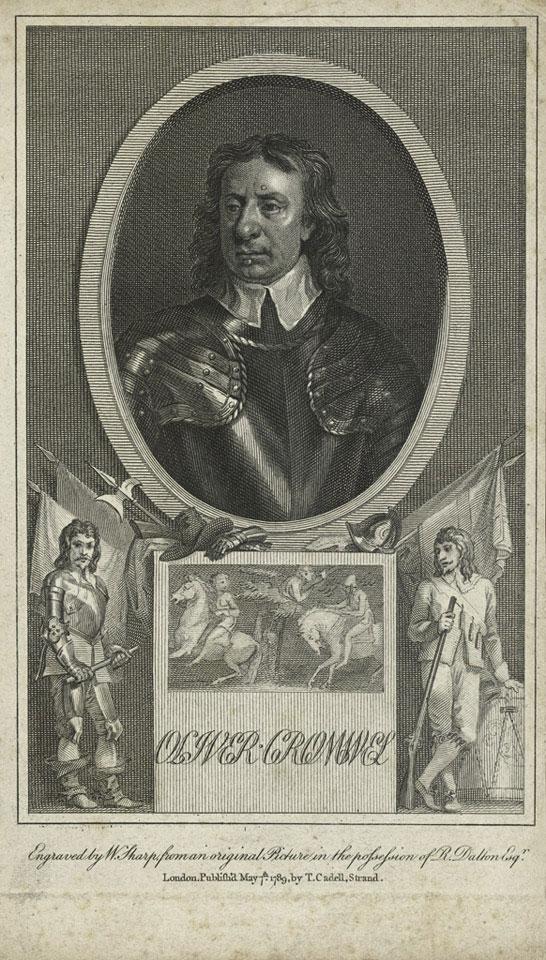
Online Collection
« Prev - 1 of 1 results - Next »
Oliver Cromwell, 1645 (c)
Engraving by W Sharp after an original described in the text as being in the possession of R Dulton, published by T Cadell, 7 May 1789.
Cromwell rose to prominence in the committees of the House of Commons and fought in the early campaigns of the Civil Wars of Britain (1639-1651) under the Parliamentarian Earl of Essex. In 1644, he commanded the cavalry of the Eastern Association at the Battle of Marston Moor; in 1645 he was in command of the cavalry of the newly-formed New Model Army at the Battle of Naseby.
By the time of the execution of King Charles I in 1649, Cromwell had become the foremost general in the New Model Army, a force of men chosen for their prowess and dedication rather than by name or wealth. He gained enormous prestige with victories at the Battles of Preston (1648), Dunbar (1650) and Worcester (1651). This was not diminished by his harsh campaign in Ireland (1649-1650) which was marked by the massacres at Drogheda and Wexford. He continued the Elizabethan policy of settling Protestants in Ireland and came to symbolize this hated policy which gave England political dominance. In 1653 Cromwell became Lord Protector of England, a position he held until his death in 1658.
NAM Accession Number
NAM. 1998-10-223-1
Copyright/Ownership
National Army Museum, Out of Copyright
Location
National Army Museum, Study Collection
Object URL
https://collection.nam.ac.uk/detail.php?acc=1998-10-223-1

